NA-MIC Internal Collaborations:DiffusionImageAnalysis
Back to NA-MIC Internal Collaborations
Diffusion Image Analysis
Tractography Methods
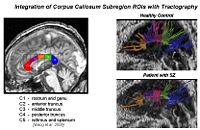
|
Corpus Callosum Fiber TractographyThe goal of this project is to examine the integrity of fibers in the corpus callosum in patients with schizophrenia and determine whether this is associated with brain activation during memory tasks. More... New: Salat D.H., Lee S.Y., van der Kouwe A.J., Greve D.N., Fischl B., Rosas H.D. Age-associated alterations in cortical gray and white matter signal intensity and gray to white matter contrast. Neuroimage, 2009 Oct 15;48(1):21-8
|
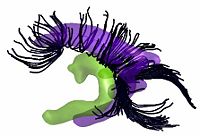
|
Joint Registration and Segmentation of DWI Fiber TractographyThe goal of this work is to jointly register and cluster DWI fiber tracts obtained from a group of subjects. More... |
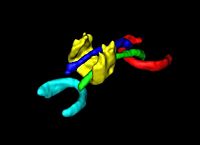
|
DTI Volumetric White Matter ConnectivityWe have developed a PDE-based approach to white matter connectivity from DTI that is founded on the principal of minimal paths through the tensor volume. Our method computes a volumetric representation of a white matter tract given two endpoint regions. We have also developed statistical methods for quantifying the full tensor data along these pathways, which should be useful in clinical studies using DT-MRI. More... |
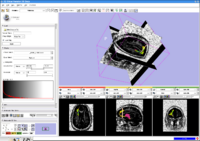
|
Stochastic TractographyThis work calculates posterior distributions of white matter fiber tract parameters given diffusion observations in a DWI volume. More... |
Clustering and Quantitative Analysis
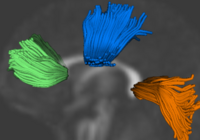
|
Group Analysis of DTI Fiber TractsAnalysis of populations of diffusion images typically requires time-consuming manual segmentation of structures of interest to obtain correspondance for statistics. This project uses non-rigid registration of DTI images to produce a common coordinate system for hypothesis testing of diffusion properties. More... New: Casey B. Goodlett, P. Thomas Fletcher, John H. Gilmore, Guido Gerig. Group Analysis of DTI Fiber Tract Statistics with Application to Neurodevelopment. NeuroImage 45 (1) Supp. 1, 2009. p. S133-S142. |
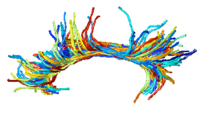
|
DTI Fiber Clustering and Fiber-Based AnalysisThe goal of this project is to provide structural description of the white matter architecture as a partition into coherent fiber bundles and clusters, and to use these bundles for quantitative measurement. More... |
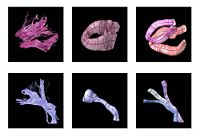
|
Fiber Tract Modeling, Clustering, and Quantitative AnalysisThe goal of this work is to model the shape of the fiber bundles and use this model discription in clustering and statistical analysis of fiber tracts. More... New: Maddah M., Zollei L., Grimson W.E.L., Westin C., Wells III W.M. , A Mathematical Framework for Incorporating Anatomical Knowledge in DT-MRI Analysis . Proceedings of the 5th IEEE International Symposium on Biomedical Imaging: From Nano to Macro 2008; 4543943: 105–108. |

|
Fractional Anisotropy in the Uncinate FasciculusOur objective is to measure the FA in the uncinate fasciculus in patients with schizophrenia. This project is based on the methods published by Kubicki et al. and extends that work by including a bipolar disorder control group, and determining whether there is an association between FA and cognitive functioning and symptoms in the patient groups. More... |
Other Diffusion Image Algorithms
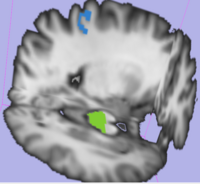
|
Integrity of Fronto-Temporal CircuitryOur objective is to develop methodology that will permit investigators to specify functional MRI regional of interests (fROI) and determine the optimal white matter pathways between the fROIs based on DTI. More... |
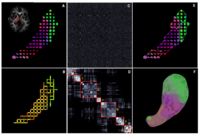
|
DTI-based SegmentationUnlike conventional MRI, DTI provides adequate contrast to segment the thalamic nuclei, which are gray matter structures. More... New: Ziyan U, Tuch D, Westin C. Segmentation of Thalamic Nuclei from DTI Using Spectral Clustering. Proceedings of the 9th International Conference on Medical Image Computing and Computer-Assisted Intervention, MICCAI 2006, LNCS 4191, pp. 807-814, 2006.Segmentation of Thalamic Nuclei from DTI using Spectral Clustering. Accepted to MICCAI 2006. |
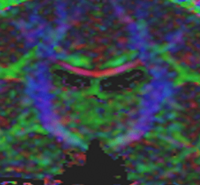
|
Influence of Imaging Noise on DTI StatisticsClinical acquisition of diffusion weighted images with high signal to noise ratio remains a challenge. The goal of this project is to understand the impact of MR noise on quantiative statistics of diffusion properties such as anisotropy measures, trace, etc. More... New: Goodlett C, Fletcher P, Lin W, Gerig G. Quantification of Measurement Error in DTI: Theoretical Predictions and Validation. Proceedings of the 10th International Conference on Medical Image Computing and Computer Assisted Intervention, MICCAI 2007, LNCS 4791, pp. 10–17, 2007. |
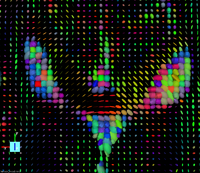
|
Notes on the dicom conversion for DTI dataReport about some observation when converting DTI data from dicom to dwi volumes More... |
Validation
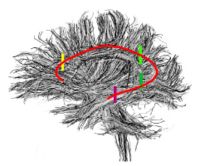
|
Contrasting Tractography MeasuresThis project represents a new initiative to build upon a shared vision among Cores 1, 3 and 5 that the field of medical image analysis would be well served by work in the area of validation, calibration and assessment of reliability in DW-MRI image analysis. More... New: S. Pujol, C-F. Westin, R. Whitaker, G. Gerig, T. Fletcher, V. Magnotta, S. Bouix, R. Kikinis, W. M. Wells III, and R. Gollub. Preliminary Results on the use of STAPLE for evaluating DT-MRI tractography in the absence of ground truth. In Proceedings of the 17th Annual Meeting of the International Society for Magnetic Resonance in Medicine ISMRM 2009, April 18-24, 2009. Honolulu, Hawaii. ISMRM 2009
|
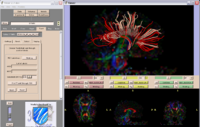
|
DTI ValidationTo carry out quantitative and qualitative validation of the DTI tractography tools. These will be applied to a limited set of specific tracts in single data sets and single tractography tools, and on several data sets using at least two tractography programs and by investigators in different laboratories. More... New: Future research is needed to establish critical values for diffusion sequence acquisition parameters that would allow diffusion data processing via Slicer. |